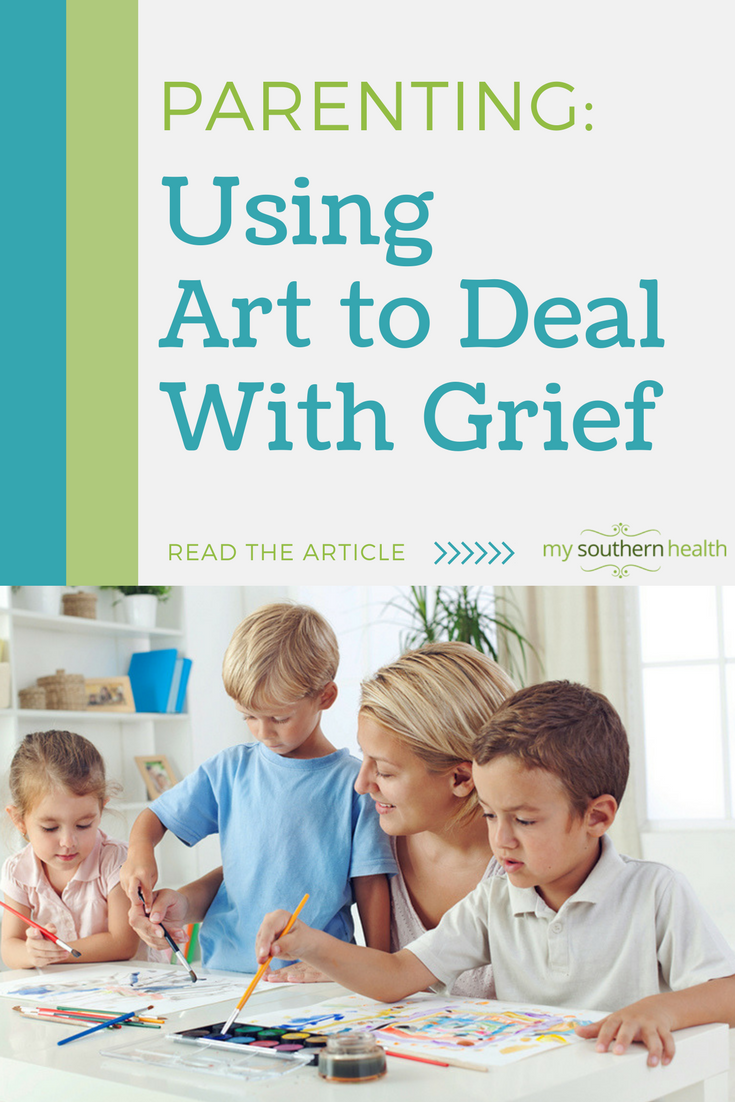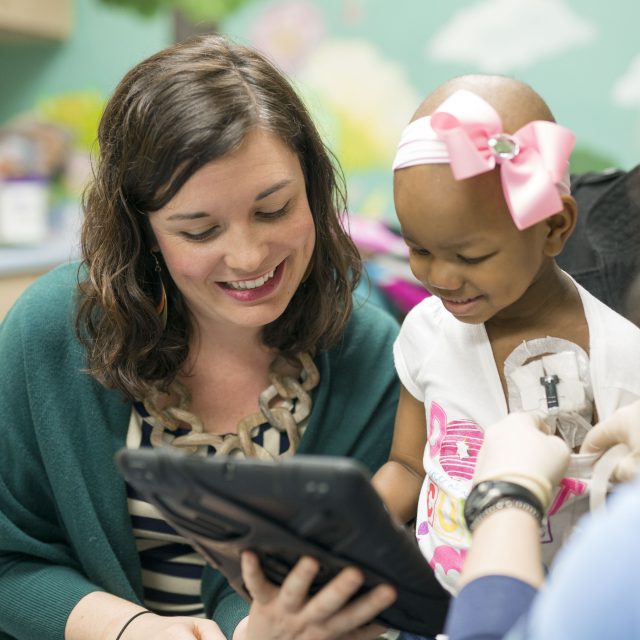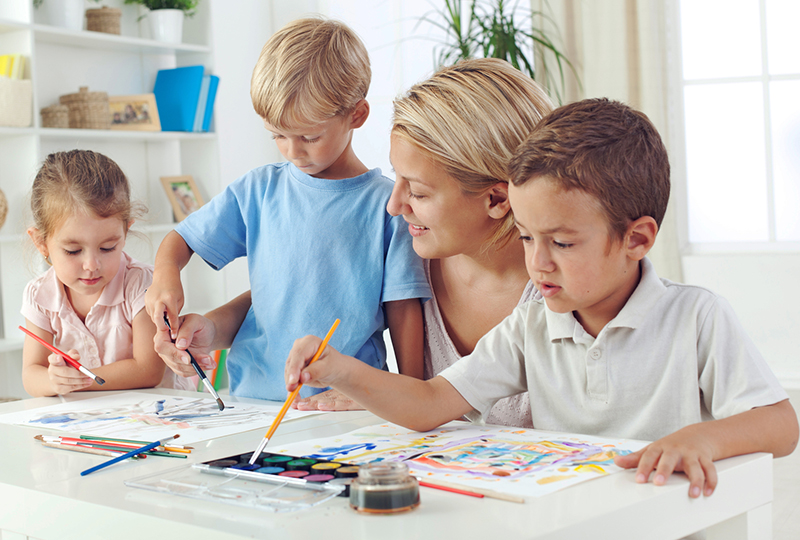Artwork can help family members feel a continued connection to a loved one who has died.
There are four children working together on an art project in the hallway of the intensive care unit. The oldest, a young teenager, is gently guiding her younger siblings as they sprinkle what appears to be sand onto pieces of white paper. They are working intently and with thoughtfulness and purpose as they talk quietly among themselves, barely aware of the tearful adults and scurrying medical staff around them. The youngest has already brushed the excess sand off of his project revealing two beautiful handprints; one belongs to him and the other belongs to his mother, who is dying in the room across the hall.
The children were brought to the hospital this day to say goodbye to their mother, to tell her they love her, to hold her hand and give her one last hug. As a child life specialist, I have come to support their family, to answer their questions and to offer an opportunity to make something special with their mother in this last day of her life.
As I listen to the children and watch them work, I hear one of the middle children repeating to her siblings my words from earlier this morning: “There is no other mom in the history of the world that has lines on her hand like our mom. Only she can make this (handprint) for us.” These handprints will become part of the legacy that this mother leaves for her children, and they provide a tangible connection that can be carried with them as they grieve her death and continue to love her.
Legacy-building activities can be an important coping tool for families facing a loss. The projects they complete and the products they create likely will be treasured possessions long after their loved one has died. They may display them and often revisit the story of the day that particular piece of artwork was made, reliving the experience of being with their loved one. They may pack them away in a safe place, only to be brought out at special times of remembering. Every family and loss is different, and the way we care for the legacy of our loved one will be different, too.
As child life specialists working with families experiencing the death of a loved one, we have the humbling opportunity to aid families in creating these pieces, hoping to make some of the darkest days slightly easier.
Below are a few ideas for children and families to create a legacy in the form of artwork, letters or photographs with the goal that the final product will help them feel a continued connection to the person who has died.
Artwork
Artwork doesn’t mean making a masterpiece. It can simply be drawing together or making handprints to commemorate the season. These art projects can create a safe and natural space for conversation about the loved one’s favorite things, colors and favorite memories together. The process can be a time of joy in the midst of great sorrow. A child’s handprint can be placed inside his mother and father’s to create a tangible reminder of togetherness, even after one of them has died. This can also be used to give children choices in a time when their loss of control seems indefinite. Simply asking “What color paper should we use?” or “What was grandma’s favorite color?” can fuel a sense of purpose and belonging in an otherwise scary and overwhelming experience, as well as provide an outlet for expression through play.
Writing
Words have power; we all know that. A person’s love can be shown through letters, stories, songs, poems, even lists. Sometimes the dying patient is able to put his or her own words to paper with the help of their family. Other times this can be a helpful outlet for family members to share stories of laughter, lessons learned, and hope for continuing the traditions instilled in those who will survive the loved one. These written words, which are now a legacy, can be picked up or tucked away, but will remain powerful for years to come.
Photography
Lastly, photographs maintain a memory long after those present have grown, changed, and/or died. The beauty of a photograph can be in the story behind it or in the emotion it provokes. By gathering photographs from years past and taking photographs when facing death, a family can create a timeline of their loved one’s life, sharing the happy memories with the sad as they are able to pull them out and remember.
Loss is difficult at any stage of life and although creating a legacy with the above ideas lacks the ability to cover the sadness, it may give peace in a tangible way. We hope that you can create memories with your loved ones and know their love lives on in you and in those legacies you create together.
Katie Beard and Jaime Bruce are Monroe Carell Jr. Children’s Hospital Vanderbilt certified child life specialists serving children and families facing loss. Katie works with children diagnosed with cancer, and her favorite legacy supply is paint, so that kids can choose their favorite colors and create something with fun sprinkled in. Jaime serves children who have a parent or grandparent who is seriously ill or injured. She feels passionate about the need for lasting memories and supports children to help each member of the family take a small piece of their loved one (thumb print) home with them.


In celebration of Child Life Month, read other stories from Monroe Carell Jr. Children’s Hospital Vanderbilt specialists to incorporate their expertise in helping your children:
- Tips for using play to help children cope with medical events
- 5 ways to make painful procedures easier for your child

